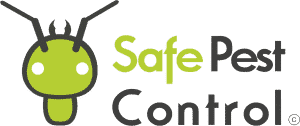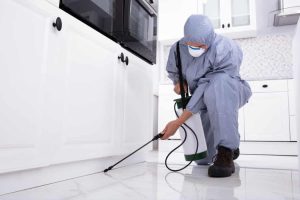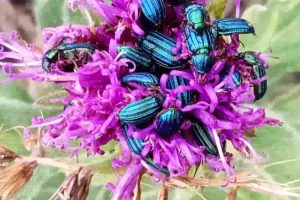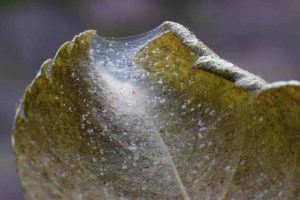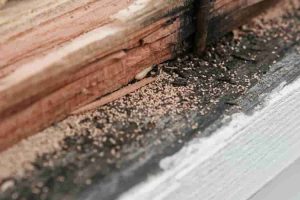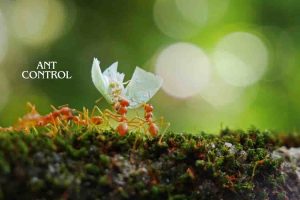The lifecycle of a German cockroach is fascinating and concerning for anyone dealing with an infestation. These pests go through three stages: egg, nymph, and adult. Understanding these stages is crucial because breaking the lifecycle at any point can help prevent an infestation from worsening.
German cockroaches are known for their quick reproduction. A single female can lay many eggs during her short lifespan, leading to rapid population growth. The nymphs, which hatch from the eggs, mature quickly and begin to reproduce, continuing the cycle.
For homeowners, breaking this cycle is key. Regular cleaning habits and eliminating food and water sources can make a huge difference. Ensure that you clean up food scraps and wipe down kitchen counters every day to make your home less inviting to these resilient pests. For persistent issues, don’t hesitate to contact Safe Pest Control today and schedule a pest control treatment for your property.
Understanding the German Cockroach Life Cycle
The life cycle of a German cockroach is divided into three main stages: egg, nymph, and adult. Each stage has specific characteristics and durations that affect how and when the cockroach can reproduce and spread.
Egg Stage
German cockroaches start their life as eggs. The female cockroach produces an egg case called an ootheca. This ootheca holds about 30 to 40 eggs. The female carries the ootheca for several weeks until the eggs are ready to hatch.
The incubation period depends on factors like temperature and humidity. Warm, humid conditions speed up the development, leading to quicker hatching. When the time is right, the eggs hatch into nymphs, marking the end of the egg stage and the beginning of the next phase. The egg stage is crucial for the start of new generations and can be a key target for pest control measures.
Nymph Stage
Once the eggs hatch, nymphs emerge. These young cockroaches look like smaller, wingless versions of adult cockroaches. They shed their exoskeleton multiple times as they grow, a process known as molting.
Nymphs go through several molts over a span of about 60 days. During this time, they hide in crevices and feed on available food sources. As they mature, they become more resilient and start to resemble adults in both size and behavior. Cutting off food and water sources can help disrupt this stage and make pest control efforts more effective.
Adult Stage
After the nymphs complete their final molt, they become adults. Adult German cockroaches are small, brown, and have wings that lay flat on their backs. Although they have wings, they rarely fly. Instead, they prefer to scurry along floors and walls in search of food and shelter.
Adult cockroaches can live for about three to six months, depending on environmental conditions. They reproduce quickly, with females producing multiple egg cases throughout their lives. This rapid reproduction cycle can lead to large infestations in a short period. Effective management at this stage is essential to prevent further spreading.
Contact Safe Pest Control today and schedule a pest control treatment for your property.
Factors Influencing German Cockroach Development
Several factors play a crucial role in the development of German cockroaches. Key influences include optimal living conditions and specific habitats where they thrive.
Optimal Conditions for Growth
German cockroaches develop best in warm and humid environments. Temperature plays a significant role, with the ideal range between 70°F and 90°F. These conditions speed up their life cycle, enabling them to reproduce quickly.
Sanitation also impacts development. If food is readily available, they can sustain larger populations. Even small crumbs, grease spots, and sticky residues provide enough sustenance. Water is another critical factor. Leaky faucets, pet water dishes, and humid spaces offer essential moisture.
The cockroaches’ life cycle depends on these factors. Eggs hatch faster in ideal conditions, and nymphs grow rapidly with ample food and water. Proper sanitation can disrupt their growth cycle. By reducing food and water sources, we can hinder their development.
Common Habitats and Hideouts
German cockroaches typically infest areas close to food and moisture. They prefer dark and secluded locations. Our kitchens are common habitats, especially under sinks, appliances, and cabinets. Cracks and crevices provide ideal hiding spots.
Bathrooms are also frequent hideouts. The constant presence of water from sinks and showers creates a suitable environment. They often hide in cracks within walls, tiles, and behind baseboards.
In addition to homes, they infest commercial establishments. Restaurants and food storage facilities are particularly vulnerable due to continuous access to food and water. Proper sanitation and regular pest control can reduce infestations. Contact Safe Pest Control today and schedule a pest control treatment for your property.
Strategies for German Cockroach Prevention and Control
By implementing thorough inspection, proper sanitation, and a combination of chemical and non-chemical control methods, we can effectively reduce and manage German cockroach populations in our homes.
Inspection and Identification
First, we need to inspect and identify the presence of German cockroaches. These pests are light brown to tan and have two dark stripes on their back. They prefer warm, humid environments close to food and water sources.
Key signs of an infestation include droppings that look like pepper specks, egg cases (oothecae), shed skins, and a musty odor. Installing monitoring traps can help capture cockroaches and monitor their population.
Sanitation and Exclusion Techniques
Sanitation is crucial in keeping German cockroaches at bay. We should develop thorough and regular cleaning habits. Eliminate sources of water by fixing leaks and wiping counters dry each night. Without food and water, cockroaches will look elsewhere for sustenance.
Sealing cracks and crevices around cabinets, pipes, and baseboards is important to prevent cockroach harborage. Properly store food in sealed containers and dispose of garbage regularly to further deter these pests.
Chemical and Non-Chemical Control Methods
Chemical methods, such as bait stations and insecticides, can be effective in reducing cockroach populations. Baits attract and poison cockroaches, while insecticides provide a quicker knockdown. However, it is essential to use these chemicals responsibly to avoid harm to humans and pets.
Non-chemical methods include using a 1:10 solution of soapy water as a contact killer, which is least toxic. For severe infestations, professional pest control services can offer comprehensive solutions to get rid of German cockroaches efficiently. Contact Safe Pest Control today and schedule a pest control treatment for your property.
Health Risks and the Importance of Control
German cockroaches can bring significant health risks into our homes. They can spread diseases, trigger allergies, and may harbor harmful bacteria.
Diseases Transmitted by Cockroaches
German cockroaches are known carriers of various diseases. They can transfer pathogens like Salmonella, E. coli, and Staphylococcus from their bodies to food sources and surfaces in our homes.
These insects walk through dirty areas and then move onto clean surfaces, spreading bacteria through contact. They also contaminate food and water sources with their droppings and vomit.
Moreover, cockroaches produce odorous secretions that can make food taste unpleasant. As nocturnal creatures, they are primarily active at night, which makes their activity hard to detect.
Allergens and Bacteria
Cockroaches are a significant source of indoor allergens. Their droppings, body parts, and saliva can trigger asthma and allergies, especially in children and sensitive individuals.
German cockroaches prefer warm, moist environments such as kitchens and bathrooms, where they can easily find food and water. The allergens they produce can become airborne and worsen respiratory conditions.
Additionally, cockroaches may carry antibiotic-resistant bacteria, raising concerns for homeowners. These bacteria can survive insecticide resistance and persist in homes, making it crucial to manage infestations.
Contact Safe Pest Control today and schedule a pest control treatment for your property.
On-Time Service

5 STAR SERVICE BASED ON 100+ GOOGLE REVIEWS
PET & FAMILY FRIENDLY TREATMENT

ALL YEAR-ROUND PROTECTION
Take Back Control Now
8
REASON TO CHOOSE SAFE PEST CONTROL
- Guarantee protection all year-round
- 30 Years Collective Experience
- An impeccable reputation across Sydney's Suburbs
- Certified treatments & written Warranty On all work carried out
- Family Owned & Operated
- Rated #1 Pest Control In Sydney NSW
- No Mess, No Smell
- Family & Pet Friendly Treatments
REQUEST A QUOTE
